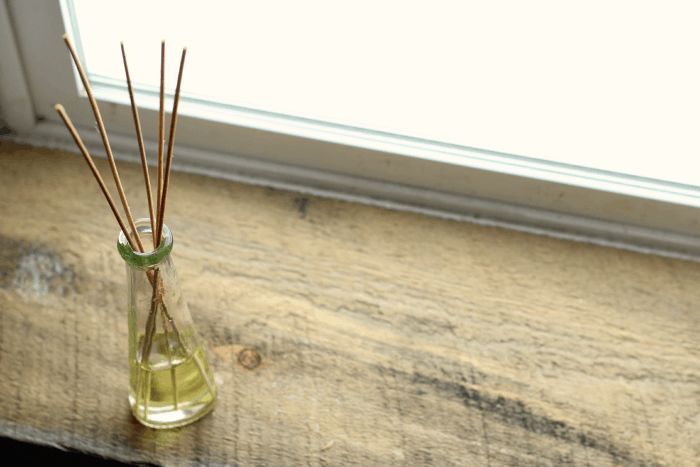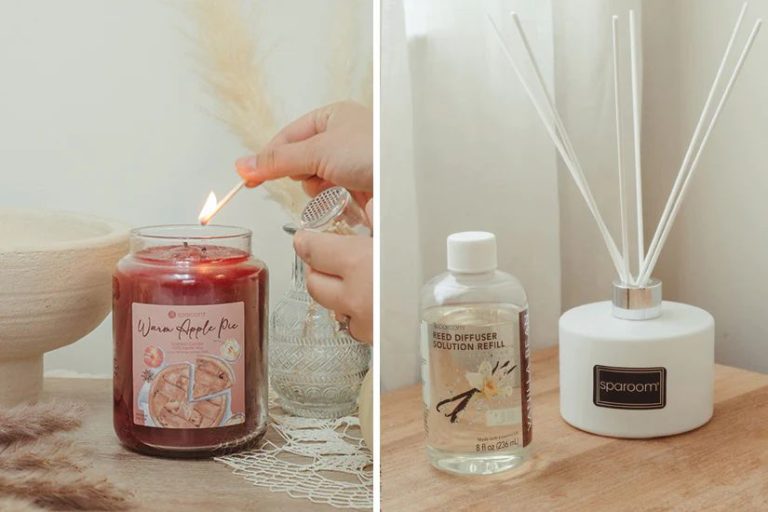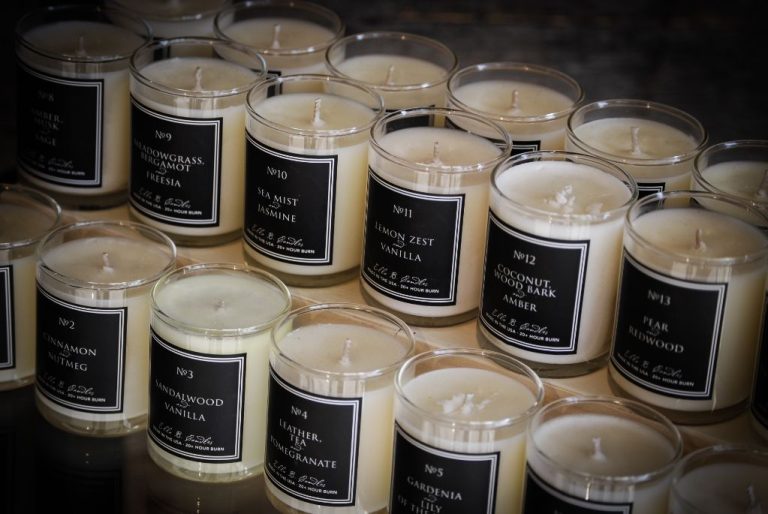What Are The Sticks For In A Diffuser?
An essential oil diffuser is a device that disperses essential oils into the air to fill a room with pleasant fragrance. The purpose of a diffuser is to spread the aromatic benefits of essential oils throughout a space. Diffusers allow people to enjoy the mental and physical benefits of aromatherapy, delivering essential oil molecules into the air to be inhaled. Inhaling essential oils can provide calming, relaxing, uplifting or energizing effects, depending on the oil used. Diffusers make it easy to experience these benefits by dispersing the oils so they can be breathed in.
What Are Diffuser Sticks?
Diffuser sticks, also known as reeds, are thin sticks that are placed into a liquid diffuser base to help diffuse essential oils into the air. The diffuser base is filled with a mixture of water, essential oils, and sometimes alcohol or other solvents. The diffuser sticks absorb this mixture through capillary action and allow the essential oils to evaporate into the surrounding air, releasing their aroma (LorAnn Oils).
Diffuser sticks are typically made from natural, absorbent materials like rattan, bamboo, and wood. Rattan is a popular choice as it provides good absorption and allows for air circulation. Bamboo is also commonly used as it is a sustainable material. Some diffuser sticks may be made from manzanita, a type of wood that has a tangled, knotted appearance. The material used can affect the rate of diffusion (CandleScience).
In summary, diffuser sticks are small, porous sticks that help to disperse essential oils into the air when placed in a liquid diffuser base. They allow the aroma to be gradually released through evaporation.
Benefits of Using Sticks
Diffuser sticks provide several benefits that enhance the diffusion and experience of essential oils in reed diffusers:
The sticks allow the fragrant oil to be absorbed and dispersed over a larger surface area compared to just having the oil in a bottle. As the sticks soak up the oil from the reservoir, more surface area is created for the scent to emanate from. The greater exposure and airflow around the sticks enables better fragrance diffusion and dispersal of the aroma throughout the room. According to Pair Fum, the capillary action along the sticks “ensures an even, steady release” of the oil’s scent.
The sticks also provide structure and stability for optimal diffusion. The sticks prevent the diffuser bottle from getting tipped over, allowing the fragrance to diffuse steadily upwards. The sticks also help maintain the oil’s viscosity and flow rate for consistent, long-lasting fragrance release.
Sticks Help Absorb Oil

The sticks that come with most reed diffusers are made of porous materials like rattan, bamboo, or reeds. According to Green Koala, these porous sticks “will absorb the scented oils and emit a soft, long-lasting aroma throughout your home.” The capillary action of the porous material draws the oil up into the sticks.
Having the sticks absorb the oil allows for a more controlled diffusion of the fragrance. As explained by Shah Patil Exports, placing the dry sticks into the oil allows them to slowly absorb the oil over time. This provides a steady, consistent scent rather than too much at once. The sticks regulate the diffusion.
Provide Structure
An important function of the reed sticks in diffusers is to provide structure and prevent direct contact between the essential oils and the diffuser itself. The porous reed material acts as a barrier that the oil soaks into, rather than having the concentrated oil come into direct contact with the ceramic or glass diffuser base which could lead to staining and buildup over time (source). The reed sticks help to evenly distribute the fragrance and prevent clogging issues.
As the reeds absorb the oil, capillary action draws the fragrance up through the sticks to maximize diffusion. If the oil was directly in the diffuser base, it would be prone to getting clogged and having sections with no airflow. The reed sticks help prevent this by providing even diffusion across the whole surface area (source). By keeping the essential oils from directly contacting the diffuser base, the reed sticks protect the materials and mechanics, ensuring longer lasting performance.
Allow Customization
One of the key benefits of using sticks in a diffuser is that they allow for customization of the diffusion https://www.etsy.com/market/custom_reed_diffuser. You can add more or fewer sticks to adjust the strength and rate of diffusion. More sticks will lead to a stronger fragrance, while fewer sticks will result in a lighter scent. The number of sticks can be tailored to your particular space or personal preference.
Sticks also enable you to arrange them in different patterns inside the diffuser. You may cluster sticks together in one area to concentrate the fragrance in a particular spot. Or, you can spread the sticks out evenly for an even diffusion throughout the whole room. Getting creative with the stick arrangement allows you to customize the diffusion experience.
Affect Style and Design
Sticks for reed diffusers come in a wide variety of styles and designs, allowing you to customize the look to match your home’s decor.. There are elegant glass or crystal sticks, rustic wood sticks, colorful bamboo sticks, and more. The style of stick you choose impacts the overall aesthetic of the diffuser. For example, clear glass sticks have a sleek, modern vibe while natural wood sticks create a earthy, organic look.
Some common stick styles include:
- Glass – These glass sticks can be clear, colored, etched, or even infused with swirls or patterns.
- Wood – Diffuser sticks made from bamboo, rattan or other natural woods add natural texture.
- Ceramic – Decorative ceramic sticks come in different shapes, colors and designs.
- Metal – Sleek metallic sticks in silver, gold or other tones for a glamorous look.
Choosing decorative sticks that match your existing decor allows the reed diffuser to seamlessly blend in as part of your room’s stylings. The sticks become part of the overall aesthetic presentation.
Stick Placement Tips
When using a reed diffuser, one of the most important factors is proper stick placement to allow the fragrance to disperse optimally throughout the room. Experts generally recommend using 4-6 reeds in your diffuser. Using too few sticks means the diffuser won’t be as effective, while too many can be overpowering. Arrange the reeds in a fan or asterisk shape in the oil to maximize scent dispersal. Make sure the reeds are fully submerged with roughly 2 inches soaked in oil.
According to Antica Farmacista, 5-6 reeds is optimal for most diffusers. Place them in a radiating pattern with space between each stick to allow air circulation. Flipping the sticks every few days helps saturate them fully for better fragrance disbursement. For smaller rooms and spaces, 4 reeds is usually sufficient.
Reed diffuser expert Lafco recommends arranging sticks “like the spokes of a wheel” with even spacing to distribute scent. Make sure no reeds are touching or overlapping. An asterisk or star shape works well too. Leave some open space in the center so fragrance can emanate upward.
Maintenance
Cleaning and replacing sticks over time is an important part of maintaining a reed diffuser.
The reeds should be cleaned every 2-3 months to remove any dust, oils, or residue that may have built up. You can clean the reeds by rinsing them in warm, soapy water and allowing them to air dry before placing them back in the diffuser (Source). Be gentle when cleaning to avoid damaging the reeds.
The reeds should also be replaced about every 3-6 months to maintain effectiveness in diffusing the scent (Source). The fragrance oils can build up on the reeds over time and eventually hinder their ability to properly diffuse the scent. Replacing the reeds allows for optimal fragrance diffusion again.
Following this cleaning and replacement schedule will keep the diffuser working properly for a long time. Just be sure not to oversaturate the reeds with fragrance oil and give them an occasional cleaning bath to remove any buildup.
Conclusion
In summary, diffuser sticks provide numerous benefits when using essential oil diffusers. The porous wood or rattan material helps absorb the essential oils so they can be dispersed into the air more effectively. The sticks also provide structure inside the diffuser to allow the oils to spread upwards. You can customize diffuser blends and the scent experience by using certain sticks with specific oils. Stick quantity, size, shape and material further affect diffuser style, capacity and aroma diffusion. Proper stick placement according to the manufacturer’s guidelines is key for performance. Finally, cleaning the sticks periodically removes excess oil buildup. Overall, diffuser sticks are an integral component that enhance essential oil diffusion and allow for creativity and personalization.




